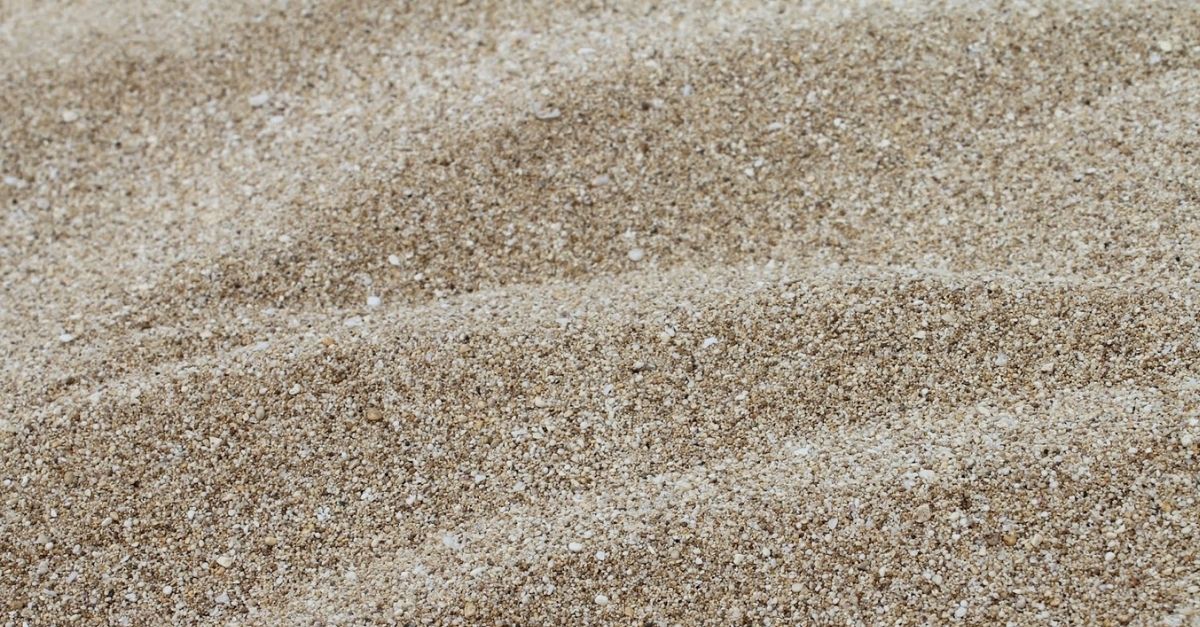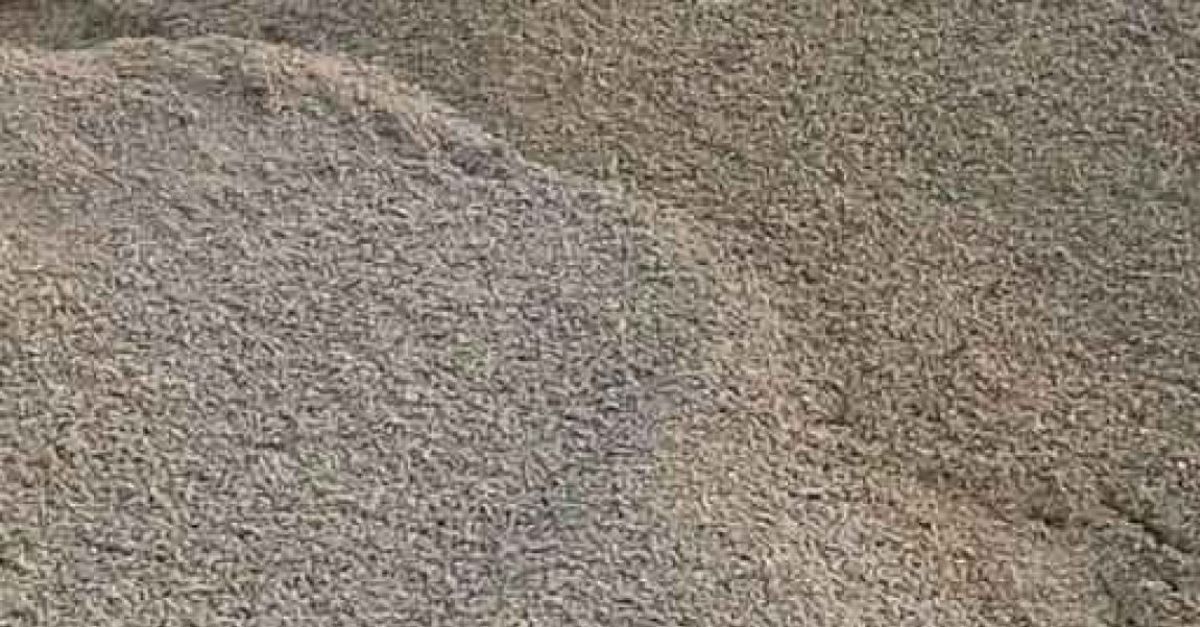Fine aggregates are an essential component of concrete mix. Their properties have a significant impact on the quality of the concrete. This article will help you understand the different types of fine aggregates. It will also touch upon their uses and properties to make an informed choice.
What are Fine Aggregates?

Any natural sand or crushed stone particles that can pass through the IS Sieve of 4.75mm and retain on a 0.15 mm sieve are fine aggregates. So, 4.75mm is the largest possible size for fine aggregates. This size gives very dense concrete. But, masonry work and plastering works require very fine types of sand. Usually, a mixture of different sizes is considered suitable and economical for most construction purposes.
Qualities of fine Aggregates:
- Fine aggregate should be clean and free from chemical impurities, organic material, etc.
- It should be inert, i.e., not react with cement upon mixing.
- It should be strong, hard, and durable.
- Its moisture absorption capacity should be less than 5%.
- It should not be soft or porous.
Properties of Fine Aggregates:
1. Fineness Modulus
The fineness modulus is the measure of the overall fineness of sand. It is calculated using the sieve analysis. The fineness of sand determines the proportion of sand in the concrete mix. It is an essential factor influencing the quality of concrete.
2. Moisture Content
The moisture content of the sand determines the cement-water ratio for making concrete. All aggregates have their respective porosity and moisture content (based on their storage/procurement areas).
Fine aggregates have four different moisture conditions: oven-dry, air-dry, saturated-surface dry, and wet. Fine aggregate in wet conditions can hold 5% moisture. It can cause bulking problems while forming concrete. Ideally, the moisture content of sand for construction works should not be more than 5%.
3. Specific Gravity
Specific gravity is calculated by dividing the solid density of sand particles by the density of water. Heavier sand particles have higher specific gravity. It creates higher-density concrete. At the same time, lower specific gravity sand particles create low-density concrete. Bulk-specific gravity helps determine the proportion of materials required in the concrete mixture. It measures the volume of aggregate particles in concrete based on the solid aggregates and voids between them.
4. Silt Content
Silt content is measured by wet-sieving of sand. The particles that pass through a 75-micron sieve are classified as silt. Ideally, the silt content of sand should not be more than 3% by weight. The silt demands a higher water/cement ratio. It results in low strength and poor workability of concrete.
5. Grading Zone of fine aggregates
The grading zone measures the percentage of fine aggregate that can pass through the 600 microns sieve. It helps in assessing the quality of fine aggregates for different uses.
| Percentage of fine aggregates passing through 600 microns sieve | |
| Zone I | 15% – 34% |
| Zone II | 34% – 59% |
| Zone III | 60% – 79% |
| Zone IV | 80% – 100% |
6. Impurities
There are two types of common impurities in the sand – organic and inorganic. Organic pollutants such as vegetative waste, hummus, animal decay, etc., are present in the sand extracted from riverbeds. Inorganic impurities commonly exist in the form of silt and clay. Both organic and inorganic pollutants require thorough washing of the sand before use in concrete.
Uses of Fine Aggregates
Fine aggregates are suitable for smooth and highly compacted surfaces. They are good for use in track fines, path fines, underneath pavers, athletic infield material, and soil amendment.
The most common uses of these aggregates include:
Athletic Infield Material
Fine aggregates are commonly used in baseball and softball infields. The ultra-fine texture makes them ideal for sliding and performance. The rich color gives a professional look to the field. When combined with the fine aggregate material, a good base surface material provides excellent functionality and handling capability.
Compacted Base
Fine aggregates are often used as a base for pathways. Since it contains no rock particles, it is ideal as a base layer below the surface layer. Horse arenas and horse stalls use fine aggregates at the base to provide a firm surface.
Soil Amendment
Farmers use fine aggregates to create healthy soil. Additionally, it is known to improve mineral quality.
Besides the applications as mentioned above, some other common uses of sand include:
- Preparing concrete for beams, slabs, and columns
- Filling in trenches
- Preparing mortar for masonry work, plastering, and paintings
- Sand-blasting for cleaning
- Counter-weights/ Sand Bags
Types of Fine Aggregates:

Fine aggregates have multiple bases of classification. They can be classified based on:
- Origin
- Grain Size
- Composition
Classification of Fine Aggregates According to origin:
1. Pit Sand:
Pit sand has sharp and angular particles. It is sometimes covered in clay. This sand requires washing and cleaning before use.
2. River sand
As the name signifies, river sand comes from the river beds. It has round particles. This sand is free from salt deposits. It also has no organic impurities. For that reason, it makes it fit for construction works.
3. Sea Sand
It is the sand from beaches and seashores. Its particles are round in shape. It often contains salts that create problems in forming concrete/mortar mixes. These salts also absorb water from the atmosphere resulting in the delayed setting. This sand is usually not preferred in construction.
Classification of Fine Aggregates According to Composition:
1. Clean Sand
This sand has well-graded quartz particles and comes in many grain sizes.
2. Silty sand
This sand has a high proportion of silt and non-plastic fines. It is also not well-graded.
3. Clayey sand
This sand has a high proportion of clay and other plastic fines. It is also poorly graded.
Classification Fine Aggregate According to Grain Size:
The below table gives the classification of sand as per their grain size;
| Type | Grain Size |
| Coarse | 2-1 mm |
| Medium | 1-0.25 mm |
| Fine | 0.5 – 0.15 mm |
Source: civiljungle.com
Final Verdict:
Fine aggregates for producing quality concrete mixture should be clean, strong, and free from organic and inorganic impurities. It is good to understand their characteristics and applications before use. Improper selection of aggregates can result in low-strength concrete. It may, in turn, cause future damages to the buildings. So, when it comes to building sturdy structures, every grain of sand requires careful selection.

Leave a Reply